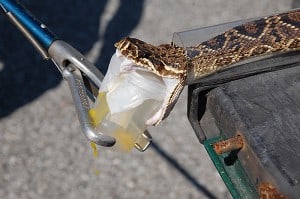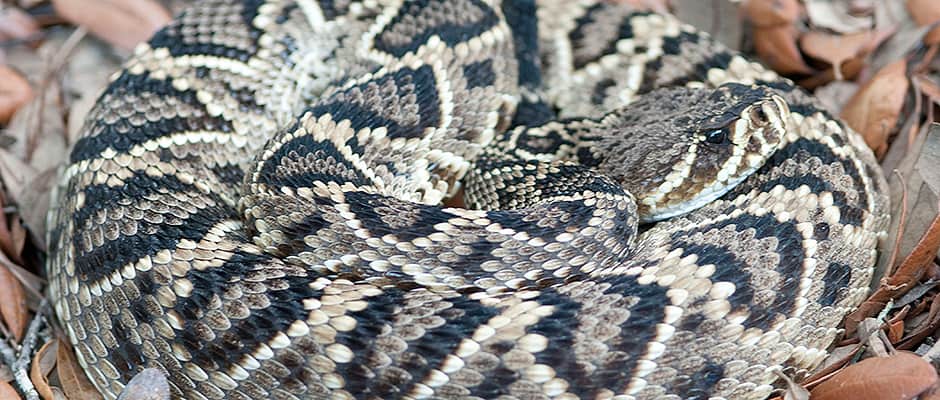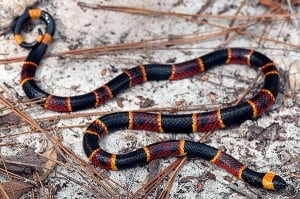Share this article
Diamondback Rattlers Choose their Own Poison
Wildlife managers looking to categorize distinct population segments of some snakes could do well to start by naming their poison.
A new study released last week in the journal GENETICS shows that reptiles like the eastern diamondback rattlesnake (Crotalus adamanteus) may have adapted their particular brand of venom to match the local fauna that lives in their particular neck of the woods.

An eastern diamondback rattlesnake from Sapelo Island, GA is delivering venom for proteomic analysis.
Image Credit: Joseph Pfaller
“For one species, the eastern diamondback, we found tons of variation,” said Darin Rokyta, an associate professor of biology at the Florida State University and the coauthor of the study.
He sampled over a hundred snakes in seven different populations of eastern diamondbacks from the Everglades to the Florida Panhandle. Five of these populations showed venoms that were distinct from each other in terms of the chemical make-up of their poison.
“We were shocked,” Rokyta said. “This is the first time anyone has looked at venom variation at this scale, and everybody has assumed that the co-evolutionary arms race would cause local populations to diverge quickly.”
The thinking goes that as the snakes continue to go after the same prey over the centuries, some of those animals will start to develop resistance to the snake venom. In response, the snake venom has to go through its own adaptive changes to keep on top of the game.
These findings are important because the eastern diamondback could be a threatened or endangered species in all or parts of its range.
“The obvious thing here is that the diamondback is currently being considered for protection under the Endangered Species Act right now,” Rokyta said.
The fact that different populations have different venoms could be enough to differentiate them as distinct population segments that receive individual protection even if the whole species doesn’t.
The surprising thing is that Rokyta said testing venom is relatively easy to work with compared to DNA tests: “You can go out, milk a snake, and let it go right there.” It could also be a cheaper way to determine distinct populations. But conserving snakes for venom type is important as each snake may occupy its own particular ecosystem niche.
“It’s a long tube with a hole at either side. Without venom, they can’t survive,” Rokyta said. “If those populations go, you lose that entire type of venom.” He added that you couldn’t just replace those extinct populations with snakes from elsewhere as they may not do very well against a modified prey base.
Rokyta said that knowing genetic differences is important but that he would like to see more emphasis on functional differences such as those used by snakes with different venoms when conservation decisions are made about which populations should be saved.
But perhaps more surprising is that Rokyta’s study found another poisonous snake, the eastern corral snake (Micrurus fulvius), has the same brand of venom across its range, according to the study.
This could be due to a number of factors, he said. Possibly, the corral snakes could have a less diverse diet than the rattlers, making their venom more species specific and potent. Or they could be relatively newer in an evolutionary sense and haven’t had as much time to diverge as the diamondbacks.
“It could have nothing to do with the function of the venom; it could be a historical thing,” he said.
These findings are also important for developing anti-venoms — currently none exists for coral snake poison, and knowing the difference between diamondback venoms could allow for more effective treatment for bites from those snakes.
Header Image:
Adult eastern diamondback rattlesnake from north Florida.
Image Credit: Kenny Wray









